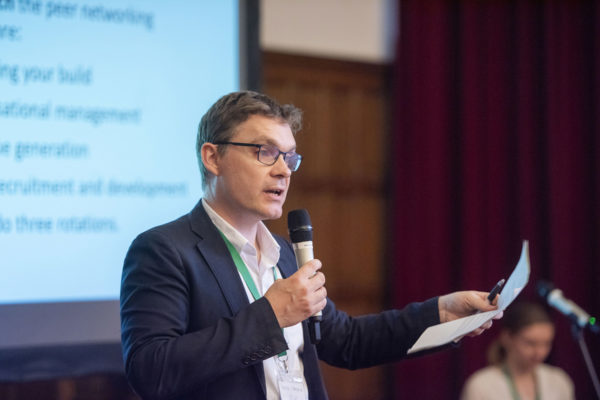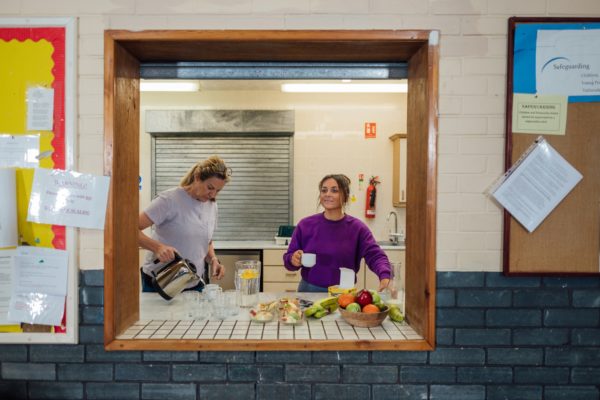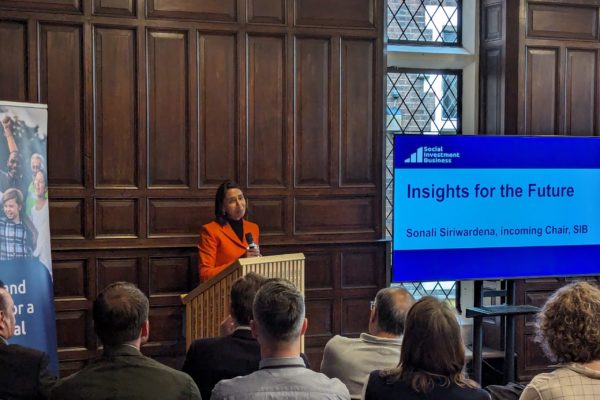In this co-authored blog, our Deputy CEO Gen Maitland Hudson and CEO Nick Temple weigh in on the current debate over whether social investment has been serving the needs of left behind areas; and consider some of the factors that have held back community regeneration initiatives in the past.
20 December 2021
Placing Social Investment

Nick Temple
Chief Executive Officer

Genevieve Maitland Hudson
Deputy Chief Executive Officer
Left behind but back in fashion
There are trends in policy as there are trends in trousers and place-based regeneration has come back into fashion at the very same time as flares have returned. That is appropriate because both were last a big deal in the late nineties:
“There seems to be a new politics of hope based on the powers of community, civic agreement and a yearning for a home called place. In it, the social economy, as the sphere of welfare and work in the hands of the Third Sector and the community, is expected to be centre stage.”
That isn’t a quote from the New Social Covenant Unit, or Onward. It was written in 2001 as a reflection on the New Deal for Communities.
The new flavour of place is not quite the same as the Blairite one, but it isn’t so very different, largely because many of the problems addressed then remain unresolved now. The 1997 version even had some of the same vocabulary. It too was ‘more human’, just as the current one is.
Both stripes of more human, local, community-driven regeneration are also supposed to tackle the same stubborn problem: geographic inequality.
That makes looking back at version one a useful exercise before rolling out an upgrade. That exercise in looking back should certainly include a consideration of the economic mechanisms used to support it, of which social investment is – an important – one. To that extent we both welcome the challenge of Local Trust’s recent report, and Matt Leach’s blog post, even if we don’t agree with their findings.
Social Investment In response to both report and blog, it’s worth noting some of the key evidence about social investment.
Firstly, at Social Investment Business:
- 38% of our investments have gone to levelling up priority 1 areas
- 44% to deciles 1-3 (by the Indices of Multiple Deprivation)
- 10.7x more investment in IMD decile 1 (most deprived) than decile 10 (least deprived).
In the work of some of our peers, this reach is even deeper.
Secondly, the average loan on Futurebuilders is 14 years –four years longer than Local Trust has been in existence. This compares to a sector average grant term that remains stubbornly at 24 months.
Thirdly, the report focuses on flexibility of the ‘product’ rather than flexibility in loan management. The average Futurebuilders loan had 2.3 variations and 83% of loan recipients received at least one. Struggling organisations were more likely to have a loan varied. Every variation focused on the resilience of the investee, and none on investor return.
Fourthly, Local Trust tells us debt is never as good as ‘equity-style’ cash. This claim is often made with little evidence to support it (with the possible exception of community shares); while there is evidence that patient, flexible loans can help strengthen organisations. Repayable finance done well can be better for revenue, assets and job creation.
Finally, we come to innovation. Engaging social investors directly might have revealed more than the insight that head offices are often in London. It could have uncovered how many of us are actively involved in developing new approaches that enable deeper community involvement and seek to enhance community assets and ownership. That includes new models of investment, community and customer participation, shifting power dynamics in decision-making, direct investment from individuals and communities, and supporting the social infrastructure that locally-rooted work relies on. Commenting on the field’s (lack of) vision without even a cursory glance seems decidedly short-sighted.
Bigger, bolder, much more forward looking
While we are looking back, and before we look forward, we should also consider the findings of studies of the 90s model of community regeneration.
Ash Amin, Angus Cameron and Ray Hudson’s 2001 review is very clear on the reasons why it failed. Several of these chime closely with the research we have done on the Futurebuilders portfolio:
- A lack of flexibility and adaptability from funders
- Short term finance
- Single year / inflexible / inappropriate contracts from public authorities
- A lack of connectivity with the mainstream economy
As we have noted already, Futurebuilders, which launched in 2002, worked hard to provide finance that responded to 1 and 2 above, flexing for investees wherever possible. What the fund didn’t do was help tackle the revenue that is essential to place-based regeneration.
Amin et al conclude that social enterprises can’t “trade their way out of state dependency”. Their view is that the promise of the social economy is not in generating resources but in finding different, fairer, ways of distributing them.
We agree.
Patience, flexibility and the long-term view – whether through grant or loan – are crucial, but they are also insufficient.
The benefits of local regeneration will only be fully realised if funders agree that as well as supporting capacity – we would argue with a mix of grant andrepayable finance – we must also tackle the sticking point of revenue, most importantly by working closely with public authorities who commission social enterprises and charities to deliver locally rooted services. We must do this explicitly, and in close collaboration with local authorities, clinical commissioning groups and central government.
The vision of social enterprises revitalising communities on their own is a myth. It’s a myth that won’t be busted by a Community Wealth Fund. Adding capacity funding, however generously, simply doesn’t address the fundamental fact that most social purpose organisations distribute social goods, they don’t create wealth for their communities to draw on. The economy of social needs found in the best community development must work alongside the mainstream economy of exchange (and that can and should include more conventional investment). Most importantly it must work better, and more effectively with the state, even as it continues to respond to neighbourhoods by adapting to their needs and engaging their citizens.
Parochial and partial critiques of past funding won’t get us there. Learning from that past and working together just might.




